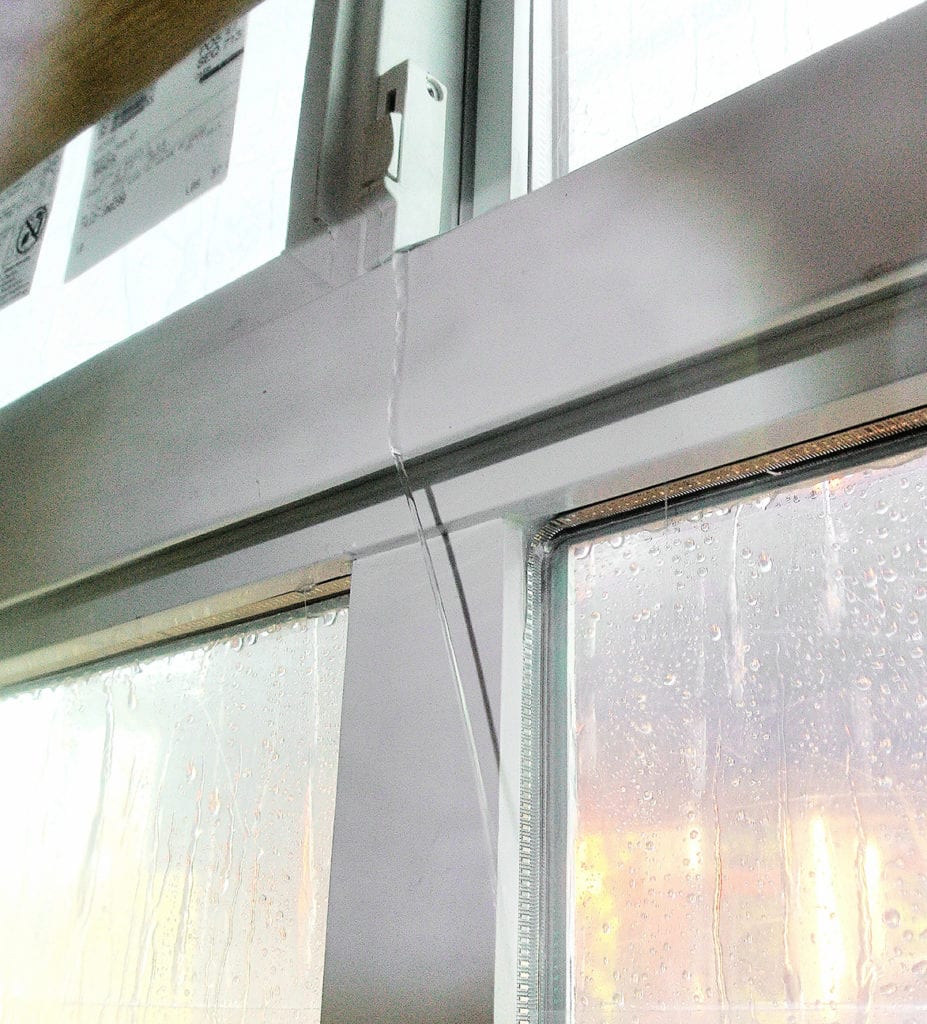Whenever Canadian building codes refer to the North American Fenestration Standard (NAFS), they also refer to the Canadian supplement to NAFS. Specifically, the codes denote that fenestration products are required to conform to both standards. This “double reference” raises questions about how the two work together. Are there additional test requirements in CSA A440S1, the Canadian Supplement to NAFS, that are not in the body of the NAFS standard?
In the harmonization negotiations leading up to the release of NAFS, there were some differences in existing test protocols that Canadian and American industry representatives could not agree on. This is why you can find separate Canadian tables in NAFS-08 and NAFS-11.
But there are other differences that did not even make it between the covers of the NAFS standard, instead ending up in the Canadian Supplement. One of these Canadian-American differences is the definition of what constitutes failure of a water penetration resistance test.
As it happens, not all water testing standards use the same failure criteria, and the most challenging criteria are in the Canadian Supplement. For this reason, Canadian building codes require NAFS-tested products sold in Canada to conform to the water penetration test criteria in CSA A440S1, and not to the failure criteria in NAFS.
Unfortunately, most American NAFS test reports I’ve seen make no mention of the Canadian Supplement, and there is no evidence in those reports to confirm that the products conform to the Canadian definition of water penetration failure in CSA A440S1. This makes it difficult for Canadian registered professionals to confirm whether US NAFS-tested products conform to Canadian code requirements as we are sometimes requested to do.
Water penetration failure in NAFS
The North American Fenestration Standard tests water penetration resistance according to ASTM E 547 (and, in addition, to ASTM E 331 for AW Class products). For conformance to NAFS, tested specimens must have no water penetration as defined in the appropriate ASTM test method at the specified test pressure.
These ASTM standards define failure as:
water penetration — penetration of water beyond a plane parallel to the glazing (the vertical plane) intersecting the innermost projection of the test specimen, not including interior trim and hardware, under the specified conditions of air pressure difference across the specimen
This seems pretty straightforward: no water can penetrate a vertical plane located at the innermost surface of the frame.
Water penetration failure in European standards
The European test method for residential windows and doors is EN 1027, Windows and Doors — Watertightness — Test Method. It defines this property with two linked terms:
watertightness — the ability of the closed and fastened test specimen to resist water penetration under the test conditions up to a pressure [at which penetration occurs]
water penetration — continuous or repeated wetting of the internal surface of the test specimen or parts which are not designed to be wetted when water drains back to external face
This definition adds something to the ASTM definition by referring to the wetting of the “internal” surface of the test specimen, and to “parts which are not designed to be wetted when water drains back to external face”. This could be understood to mean that undrained water within the product would be a failure. (I have been told that European labs only look for visible water penetration and do not open a closed sash to see if trapped water remains in the product after a test, but cannot confirm whether this is true. If any readers of this blog have first-hand knowledge of how this definition is applied in practice, please let us all know by posting your comments below.)
Water penetration failure in the Canadian Supplement CSA A440S1
The Canadian Supplement provides the following definition of successful water penetration resistance in Clause 5.4:
When tested in accordance with clause 5.3.3 of AAMA/WDMA/CSA 101/I.S.2/A440, [NAFS-08]
(a) no water shall penetrate the window, door or unit skylight assembly and cause wetting of the interior room surfaces;
(b) no water shall pass through the window, door or unit skylight into the rough opening or assembly adjoining the window, door or unit skylight below the sill; and
(c) no water shall remain trapped in the window, door or unit skylight assembly after the test pressure has been released. This shall be confirmed by observing the receding water level in the window, door, or unit skylight assembly after the pressure has been released. Water retained as droplets or surface film due to surface tension within the drained cavities shall not be considered evidence of failure of the test.
This Canadian definition makes clear that a lab must have an unobstructed view of the underside of the product during the test, and must ensure that the drainage gutters in sliding sash products drain completely at the conclusion of the test. For compression seal products, it is understood to mean that the lab must open the sash to ensure no undrained water remains trapped within the enclosing frame.
This definition of water penetration resistance has existed in the superseded Canadian CSA A440 standard since at least 2000. Its three requirements are challenging to meet, especially if the amount of undrained water is very small and appears to be insignificant. I cannot help but think 5.4 (c) had sliding sash windows in mind—these products incorporate integral drainage gutters into the frame where water can be seen to accumulate during water tests or severe rain events—but the definition has been carried forward into the NAFS era and now applies to all products within the scope of the NAFS.
Do these differences affect field testing for water penetration?
They can in several ways. Field testing requirements for newly installed windows and doors are commonly described in project specifications. If such specification documents refer only to a test method such as ASTM E 1105, the definition in that standard would be understood to apply. This would commonly be the case for products that are outside the scope of NAFS.
If; however, the products are within the scope of NAFS and comply with the code’s air-water-structural requirements on the basis of testing to NAFS and the Canadian Supplement, the definition of water penetration failure in the Supplement could be deemed to apply. This view would likely prevail in matters involving litigation.
It is not unusual for Canadian project specifications to refer to the definition of water penetration failure in CSA A440S1 when ASTM or other test methods are employed to verify the performance of newly installed fenestration products.
Attention US NAFS test labs!
Many US and overseas manufacturers are not aware of how significant the differences are between the two countries’ code compliance requirements and incorrectly assume they will be able to leverage their American NAFS testing to products sold in Canada. I am aware of several US manufacturers who are not pleased that their US NAFS test reports do not comply with some, or all of the Canadian requirements in the NAFS standard or in the Canadian Supplement.
If there are any US labs following this blog, I urge you to get a copy of CSA A440S1 to learn about these and other key differences between NAFS in Canada and NAFS in the US.
You will do your American and overseas clients a favor by making them aware of these differences. By developing a test program that captures the requirements of the Canadian market in addition to those that apply only in the US, your clients will save time and money as they head north of 49—and trust me, they will thank you for it.
For more information about testing for NAFS in Canada, please see the post: For Our American Friends: 7 Essential Tips for Complying with NAFS in Canada.



